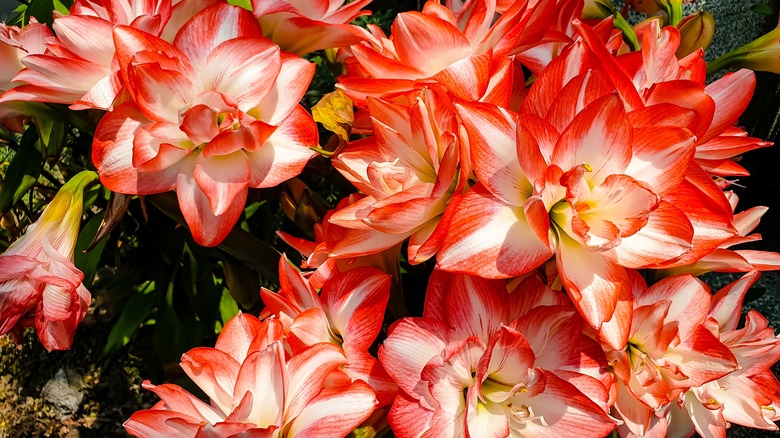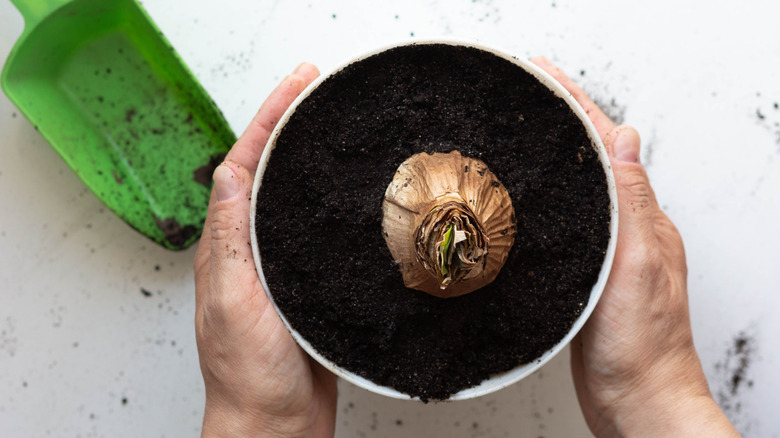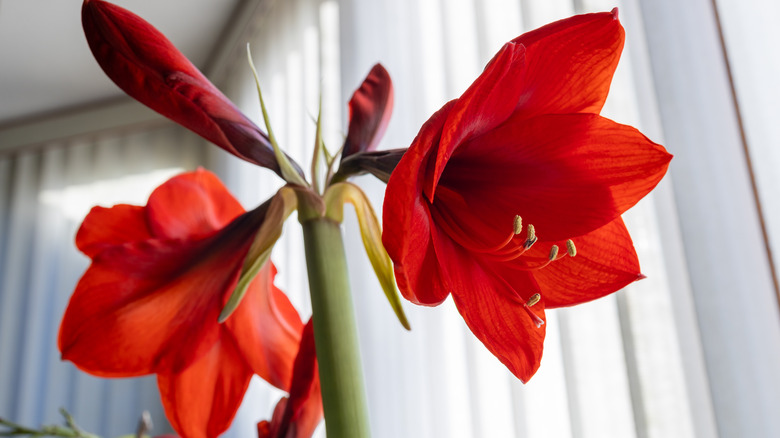Banish Your Amaryllis Bulbs' Worst Enemy With This DIY Solution
If you have a garden and are deciding on flowers to plant, you should consider one of the most beautiful and striking options: the amaryllis. This bulb plant sprouts some of the most gorgeous, colorful flowers you've ever seen. However, all that beauty can fade into oblivion when the amaryllis bulbs' worst enemy, the fungus gnat, comes into play. The fungus gnat is a small pest that can start out as a nuisance, but turn into a major problem for your plant. Fortunately, you can throw together a DIY mixture that will banish them from your space once and for all. A solution of hydrogen peroxide and water will keep those flying pests away.
Fungus gnats might seem harmless if their numbers are still low, but things can quickly escalate when their population grows on your plant. These pests reside and breed in potted soil. Though the flying gnats are annoying but harmless, the larvae can kill the roots of the plants whose soil they inhabit by feeding on the plant as well as fungi. This can cause stunted growth, wilting, and yellowing of the bulb. Hydrogen peroxide will kill the fungus gnat eggs as well as the larvae. Because their life cycle is only about three weeks, the adult flies will eventually die out and you'll be free once again.
Water the soil with hydrogen peroxide solution
If you discover a fungus gnat infestation on your potted amaryllis bulbs, it's time to get to work. Mix one part 3% hydrogen peroxide with three parts water and water the plant with this solution. Make sure not to get any on the plant itself. The solution should get rid of the fungus gnats for you, but in the event that it doesn't do away with all of them, repeat this every time you water the plant. Stay consistent with the treatment.
Using this solution does come with risks, though. One of the unfortunate disadvantages of using hydrogen peroxide on your potted plant soil is that it could strip the soil of bacteria and some other organisms. This wouldn't necessarily be a bad thing if some of those organisms weren't beneficial to the soil health. But unfortunately, hydrogen peroxide doesn't spare the good organisms. Once you've used the hydrogen peroxide solution and the fungus gnats have been duly vanquished, you can feed fertilizer or compost into the soil to replenish the good bacteria lost in the process.
Prevent fungal growth on your amaryllis
Fungus gnats feed on decaying material and fungi. The presence of fungal growth can encourage the flies to settle in your potted plant and reproduce, overwhelming the plant. As plants respire, they give off moisture. When you keep your amaryllis covered, that moisture is retained and is fodder for fungi. Keep your plant uncovered to prevent fungal growth. Also, don't water your plant overhead. Always do so directly into the soil. Let the soil dry before you water again. Fungus gnats love moist soil so stick to a routine and never overwater the amaryllis.
The state of your home can influence the gnats as well. If you have standing water in your basement or pipes due to clogging or leaks, they could foster fungus gnats. By keeping your pipes free and your house clean and sanitized, you can hinder the onset of an infestation.
The type of soil you use in your pots matters. If you're not particularly concerned with what dirt you use and end up grabbing some from your yard, you could be laying the groundwork for a future fungus gnat infestation. Your yard soil could contain fungus gnat eggs or larvae. Buy bagged soil from a reliable manufacturer that's been tested for pests and diseases to reduce your chances of dealing with an outbreak.


